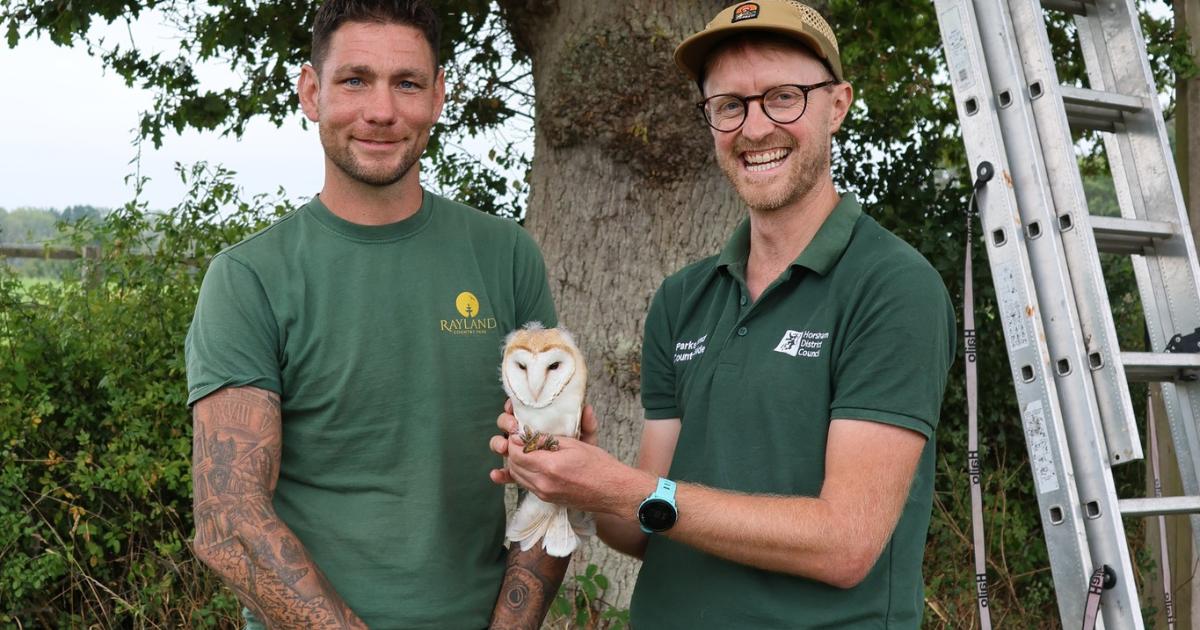The young owl was found at Raylands Park, Horsham, after a season marked by extremely low chick numbers across West Sussex.
Three hatchlings were initially spotted at the site, but only one survived.
Jake Everitt from Horsham District Council visited the park to ring the chick, which is now nearly ready to fledge.
Ben Gumbrell, park manager at Raylands Park, said: “We’re incredibly proud to offer sanctuary to these iconic birds.
Close-ups of the little owl chick. (Image: Visit Horsham)
“The birth and survival of this owlet is a joy to witness, and a reminder of our responsibility to protect and restore natural habitats.
“We have calculated that we have had 29 barn owls born at Raylands since I built the first barn owl box.”
Of the more than 60 nesting boxes Mr Everitt monitors across the district, only four have contained owls this year.
Ben Gumbrell said: “This is an extremely poor year for barn owls in Sussex, so the survival of this single chick at Raylands is extraordinary.
“It shows just how vital it is to protect the habitats that prey species rely on – without them, the entire food chain suffers.”
The decline in barn owl numbers is mainly due to a severe shortage of prey, linked to a poor acorn crop last year.
Acorns are a crucial winter food source for voles, which make up a large part of the barn owl’s diet.
Without enough voles, the only chick to survive did so by consuming its weaker siblings.
The little owl chick. (Image: Visit Horsham) Across the county, fewer than 10 barn owl chicks have been recorded this year, making the Raylands Park owlet particularly important.
Barn owls are a protected species in the UK, threatened by habitat loss, changing weather patterns, and declining prey numbers.
The success at Raylands Park highlights the importance of conservation.
The park’s managed zones, wildlife corridors and natural nesting sites have created a safe environment for wildlife.
Visitors to the park are asked to respect the owl’s space as the youngster prepares to leave the nest.

